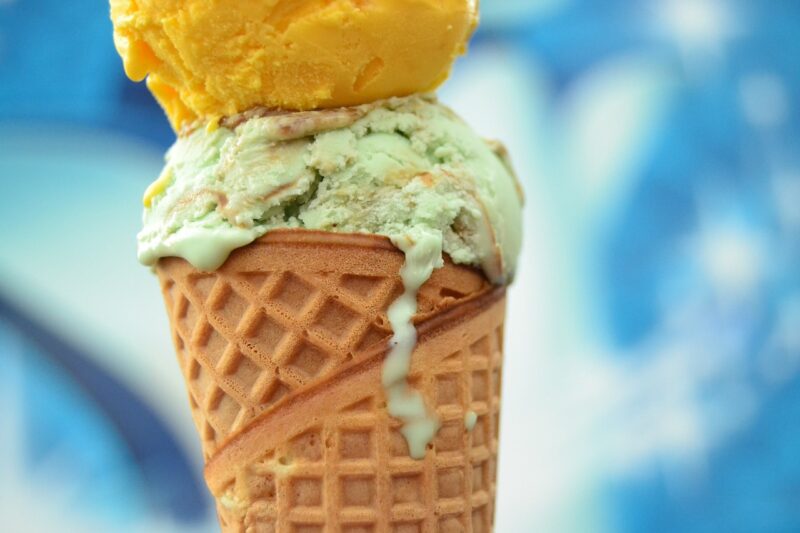How Ice Cream Became a Symbol of Celebration in Pop Culture
November 16, 2024

Ice cream, that delightful frozen treat, has not only captured our taste buds but has also carved its essential place in the tapestry of our social celebrations. From birthday parties to summer picnics, and even grand holidays, ice cream has evolved to symbolize more than just a dessert; it embodies joy and togetherness.
—
### 1. A Sweet History of Ice Cream
The history of ice cream dates back centuries, with its roots tracing to ancient civilizations. The earliest records suggest that ice cream originated in China around 200 BC, where a mixture of milk and rice was packed in snow to freeze. Over the years, variations emerged in different cultures, including the Roman Empire’s snow and fruit mixtures and the Arabic versions made with milk and sugar.
However, it wasn’t until 18th century Europe, particularly in Italy and France, that ice cream as we know it today began to take shape. The introduction of ice cream machines and innovations in freezing techniques allowed for the creamy concoctions that would soon capture the world’s hearts. By the late 19th century, ice cream parlors began to sprout, leading to an explosion of flavors and varieties.
—
### 2. Ice Cream in American Culture
The 20th century marked a significant turning point for ice cream in America. The invention of the ice cream cone at the 1904 World’s Fair in St. Louis is just one example of how this treat began to permeate popular culture. It encapsulated the spirit of the time and became synonymous with leisure and celebration.
Ice cream sodas and sundaes emerged as popular treats in soda fountains, solidifying ice cream’s status as a convivial food enjoyed by people of all ages. It is during these formative years that ice cream gained a reputation for being a celebratory food; it became a reward for children, a staple during summer get-togethers, and a symbol for various milestones in life such as birthdays, weddings, and graduations.
—
### 3. The Role of Ice Cream in Popular Celebrations
#### Birthdays and Ice Cream
The birthday cake tradition has long included the ceremonial practice of blowing out candles, but often accompanied by a scoop (or two) of ice cream. In fact, many people will argue that the ice cream is what truly makes the birthday celebration complete. The flavors and toppings allow for personalization and creativity, making the dessert feel special to the birthday individual.
#### Summer Fun
In summer, ice cream trucks become icons of joy for children and families. The nostalgic sound of the music, and the assortment of colorful treats, play a pivotal role in many childhood memories. Ice cream is also a staple at summer outings—beaches, parks, and festivals—creating a tangible bond between the treat and the excitement of sunshine and leisure.
#### Holidays and Festivals
Ice cream has found its way into various holiday traditions. Whether it’s a festive ice cream cake for Christmas or pumpkin-flavored scoops for Thanksgiving, it brings a playful twist to holiday gatherings. Events such as National Ice Cream Day and the Ice Cream Festival celebrate the joy of this delicacy, further entrenching it within the framework of American culture.
—
### 4. The Influence of Media on Ice Cream’s Status
Movies, television shows, and advertisements have had a significant impact on solidifying ice cream as a cultural symbol. Iconic scenes featuring characters enjoying ice cream cones in romantic settings or epic ice cream sundae challenges create memorable moments that elevate the treat’s associativity with happiness and celebration.
For example, in movies like *Ghostbusters*, the usage of ice cream as a method for bonding and relaxation creates an emotional resonance that viewers connect with. TV shows often depict ice cream as a go-to comfort food, further entrenching the notion of it being a celebratory indulgence.
—
### 5. Ice Cream in the Modern Age
In today’s world, ice cream continues to be reinvented and revitalized, with trends emerging around artisanal flavors, vegan options, and experimental combinations. The rise of social media has also changed how we engage with ice cream. The aesthetic quality of desserts makes them highly shareable on platforms like Instagram and TikTok, leading to a resurgence of ice cream-related trends (think: rainbow cones or stuffed ice cream sandwiches) that unite communities in celebration.
Moreover, ice cream shops often become gathering places where friends and families come together, whether it’s a special celebration or just a casual outing.
—
### Conclusion
From its historical origins to its current place as a staple at our celebrations, ice cream has matured into a symbol of joy, comfort, and togetherness. It is not merely a dessert; it’s an experience that evokes fond memories and future aspirations. As we continue to innovate and enjoy new flavors and combinations, ice cream remains a beloved part of our collective culture. So, the next time you enjoy a scoop, remember it’s not just about the taste—it’s about the celebration it represents in our lives.







